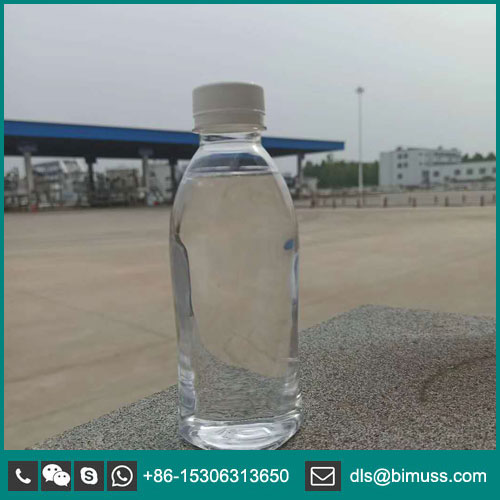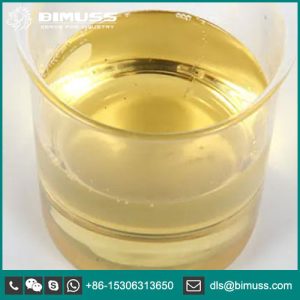Monoethylene glycol

Monoethylene glycol, also known as ethylene glycol and 1,2-ethyleneglycol, is abbreviated as EG or MEG. The chemical formula is (CH2OH) 2, which is the simplest diol.Monoethylene glycol is a colorless, odorless and sweet liquid with low toxicity to animals. Monoethylene glycol can be miscible with water and acetone, but its solubility in ethers is small.
Monoethylene glycol
Product Description
Monoethylene glycol, also known as ethylene glycol and 1,2-ethyleneglycol, is abbreviated as EG or MEG. The chemical formula is (CH2OH) 2, which is the simplest diol.Monoethylene glycol is a colorless, odorless and sweet liquid with low toxicity to animals. Monoethylene glycol can be miscible with water and acetone, but its solubility in ethers is small. Used as solvent, antifreeze and raw material for synthetic polyester. Polyethylene glycol (PEG), a high polymer of ethylene glycol, is a phase transfer catalyst and is also used for cell fusion; Its nitrate ester is an explosive.
Product Name | Monoethylene glycol |
Alias | MEG,EG,ethylene glycol |
CAS No. | 107-21-1 |
Chemical formula | C2H6O2 |
Chemical property
Ethylene glycol is a colorless, transparent and slightly viscous liquid. It tastes slightly sweet. Easy to absorb moisture. It can be miscible with water, glycerol, acetone, acetic acid, aldehydes, pyridine and ethanol, slightly soluble in ether, but insoluble in benzene, petroleum ether and oil. The melting point may cause combustion and explosion in case of open fire, high heat or contact with oxidant. In case of high heat, the internal pressure of the container will increase, and there is a risk of cracking and explosion.
Application
It is mainly used for making polyester, polyester, polyester resin, hygroscopic agent, plasticizer, surfactant, synthetic fiber, cosmetics and explosives. It is also used as solvent for dyes and inks, antifreeze agent for engine, gas dehydrating agent, resin and wetting agent for cellophane, fiber dimension, leather and adhesive. It can produce synthetic resin pet, fiber grade PET, that is, polyester fiber, bottle chip grade PET, which is used to make mineral water bottles, etc. It can also produce alkyd resin, glyoxal, etc. and can also be used as antifreeze. In addition to being used as antifreeze for automobile, it is also used for the transportation of industrial cooling capacity. It is generally called refrigerant. At the same time, it can also be used as condensate like water.
Ethylene glycol methyl ether series products are high-grade organic solvents with excellent performance. They are used as solvents and diluents for printing inks, industrial cleaning agents, coatings (nitrofiber paint, varnish, enamel), copper clad laminates, printing and dyeing, etc; It can be used as raw materials for the production of pesticide intermediates, pharmaceutical intermediates and synthetic brake fluid and other chemical products; As electrolyte of electrolytic capacitor, tanning chemical fiber dye, etc. It is used as textile auxiliaries, synthetic liquid dyes, and raw materials of desulfurizer in chemical fertilizer and oil refining production.
When ethylene glycol is used as refrigerant, attention should be paid to:
The freezing point changes with the concentration of ethylene glycol in aqueous solution. When the concentration is below 60%, the concentration of ethylene glycol in aqueous solution increases and the freezing point decreases. However, when the concentration exceeds 60%, the freezing point shows an upward trend with the increase of ethylene glycol concentration, and the viscosity will also increase with the increase of concentration. When the concentration reaches 99.9%, its freezing point rises to – 13.2 ℃, which is an important reason why concentrated antifreeze (antifreeze mother liquor) can not be used directly, which must attract the attention of users.
Ethylene glycol contains hydroxyl groups. When working at 80 ℃ – 90 ℃ for a long time, ethylene glycol will be oxidized to glycolic acid first and then oxalic acid, that is, oxalic acid (oxalic acid), which contains two carboxyl groups. Oxalic acid and its by-products affect the central nervous system first, then the heart, and then the kidneys. Ethylene glycol and acetic acid cause corrosion and leakage to the equipment. Therefore, there must be preservatives in the prepared antifreeze to prevent the corrosion of steel and aluminum and the formation of scale.
Storage
Sealed and avoid leak,stored in a cool,dry and ventilated area.
Document provided
TDS,COA,MSDS,B/L,Packing list.
Delivery information
Packing:200L Plastic drum.
It shall be sealed during storage, and nitrogen sealing, moisture-proof, fire prevention and antifreeze shall be adopted for long-term storage. Store and transport flammable chemicals according to regulations.
HS Code:2905310000


